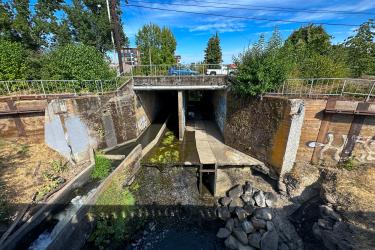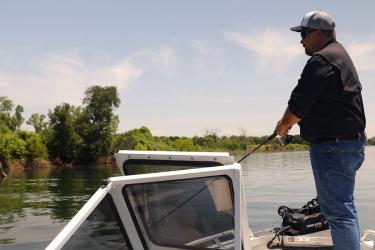This is a reminder that the current waiver for observer and catch monitor coverage in West Coast fisheries expires at 11:59 pm on Thursday April 30, 2020. Beginning at 12:00 am on May 1st, observer and catch monitor coverage will again be required per existing regulations.
Vessels Departing Port Before 12:00 am on May 1st
Vessels departing port at 11:59 pm on April 30th or earlier must notify the appropriate observer program (or their observer provider in the case of 100 percent coverage fleets) but will have coverage waived for that trip.
Vessels Departing Port After 11:59 pm on April 30th
Vessels departing port at 12:00 am on May 1st or later must have an observer(s) on board, if required to do so by existing regulations or terms and conditions of an exempted fishing permit.
Groundfish Shorebased Individual Fishing Quota (IFQ) Trips Landing After 11:59 pm on April 30th
Any offload that begins at 12:00 am on May 1st or later must have a catch monitor present to monitor the offload, consistent with existing regulations.
Background
As part of the NOAA Fisheries’ response to the COVID-19 pandemic, and consistent with the authority provided under an emergency rule signed on March 24, 2020, the agency temporarily waived the requirement for commercial fishing vessels and first receivers in West Coast fisheries to carry a fishery observer or have a catch monitor. The waiver is in effect from April 16, 2020, through April 30, 2020.
West Coast observer and catch monitor service providers have implemented policies to address health and safety concerns of the fishing industry and observers associated with the COVID-19 pandemic. These policies include instituting a 1-to-1 ratio of observers and catch monitors with vessels and seafood processing plants and a 14-day period of self-isolation for observers/catch monitors before starting their deployment with their assigned vessel/plant. Providers’ social control guidance may result in some shortage of observers/catch monitors to meet the coverage needs of all fleets because observers/catch monitors typically serve multiple vessels and plants. However, we anticipate there will be sufficient observers/catch monitors to maintain the current level of observer coverage in most fleets and will maintain existing observer coverage and catch monitor requirements for both the groundfish and highly migratory species fleets.
NOAA Fisheries intends to use existing regulatory and our emergency rule authority to waive individual trips and vessels in lower priority fleets on a case-by-case basis to ensure qualified observers/catch monitors are available for higher priority fleets (i.e., fleets with 100 percent coverage requirements or bycatch of species listed under the Endangered Species Act).
NOAA Fisheries will continue to monitor and evaluate this situation. As we have done in other parts of the country, we will use this time to work with the observer service providers to implement adjustments to the logistics of deploying observers, ensuring qualified observers or at-sea monitors are available as soon as safely possible.
Observers and at-sea monitors are an essential component of commercial fishing operations and provide critical information that is necessary to keep fisheries open and to provide sustainable seafood to our nation during this time. We will continue to monitor all local public health notifications, as well as the Centers for Disease Control and Prevention (CDC) for updates. We are committed to protecting the public health and ensuring the safety of fishermen, observers/catch monitors, and others, while fulfilling our mission to maintain our nation's seafood supply and conserving marine life.
For additional information, contact the Northwest Fisheries Science Center Observer Program at 1 (866) 780-8064.


